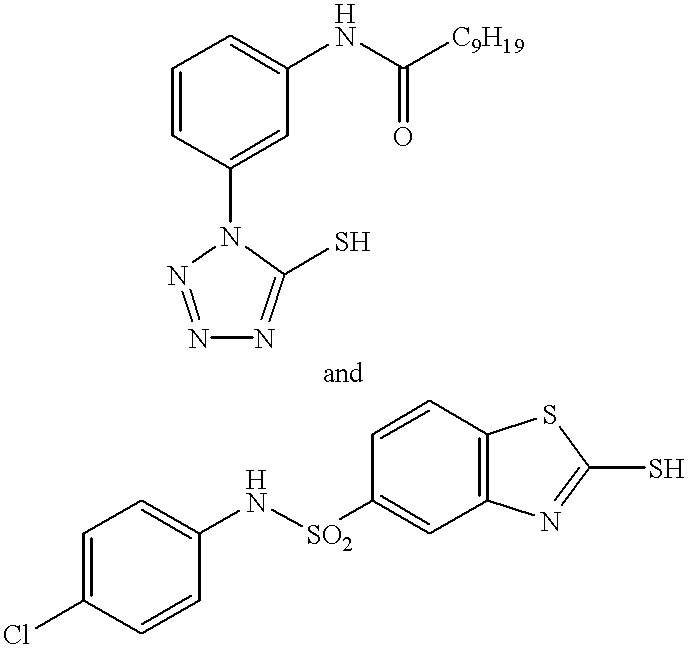Substantially light-insensitive thermographic recording material with improved stability and image-tone
a thermographic recording and stability technology, applied in the direction of photosensitive materials, instruments, diffusion transfer processes, etc., can solve the problems of inventors unsuitable for stabilizing thermographic materials and prior art stabilizers
- Summary
- Abstract
- Description
- Claims
- Application Information
AI Technical Summary
Benefits of technology
Problems solved by technology
Method used
Image
Examples
& invention examples 1 to 5
Thermosensitive Element
A 100 .mu.m thick support coated with the following subbing-layer composition:
was doctor blade-coated with a coating composition containing butanone as a solvent and the following ingredients so as to obtain thereon. After drying for 1 hour at room temperature and then 1 hour at 50.degree. C., layers with the compositions given in table 1 for COMPARATIVE EXAMPLE 1 and INVENTION EXAMPLES 1 to 5 were obtained.
Thermographic Printing
During printing of the recording materials of COMPARATIVE EXAMPLE 1 and INVENTION EXAMPLES 1 to 5 the print head was separated from the imaging layer by a thin intermediate material contacted with a slipping layer of a separable 5 .mu.m thick polyethylene terephthalate ribbon coated successively with a subbing layer, heat-resistant layer and the slipping layer (anti-friction layer) giving a ribbon with a total thickness of 6 .mu.m.
The printer was equipped with a thin film thermal head with a resolution of 300 dpi and was operated with ...
PUM
 Login to View More
Login to View More Abstract
Description
Claims
Application Information
 Login to View More
Login to View More - R&D
- Intellectual Property
- Life Sciences
- Materials
- Tech Scout
- Unparalleled Data Quality
- Higher Quality Content
- 60% Fewer Hallucinations
Browse by: Latest US Patents, China's latest patents, Technical Efficacy Thesaurus, Application Domain, Technology Topic, Popular Technical Reports.
© 2025 PatSnap. All rights reserved.Legal|Privacy policy|Modern Slavery Act Transparency Statement|Sitemap|About US| Contact US: help@patsnap.com



